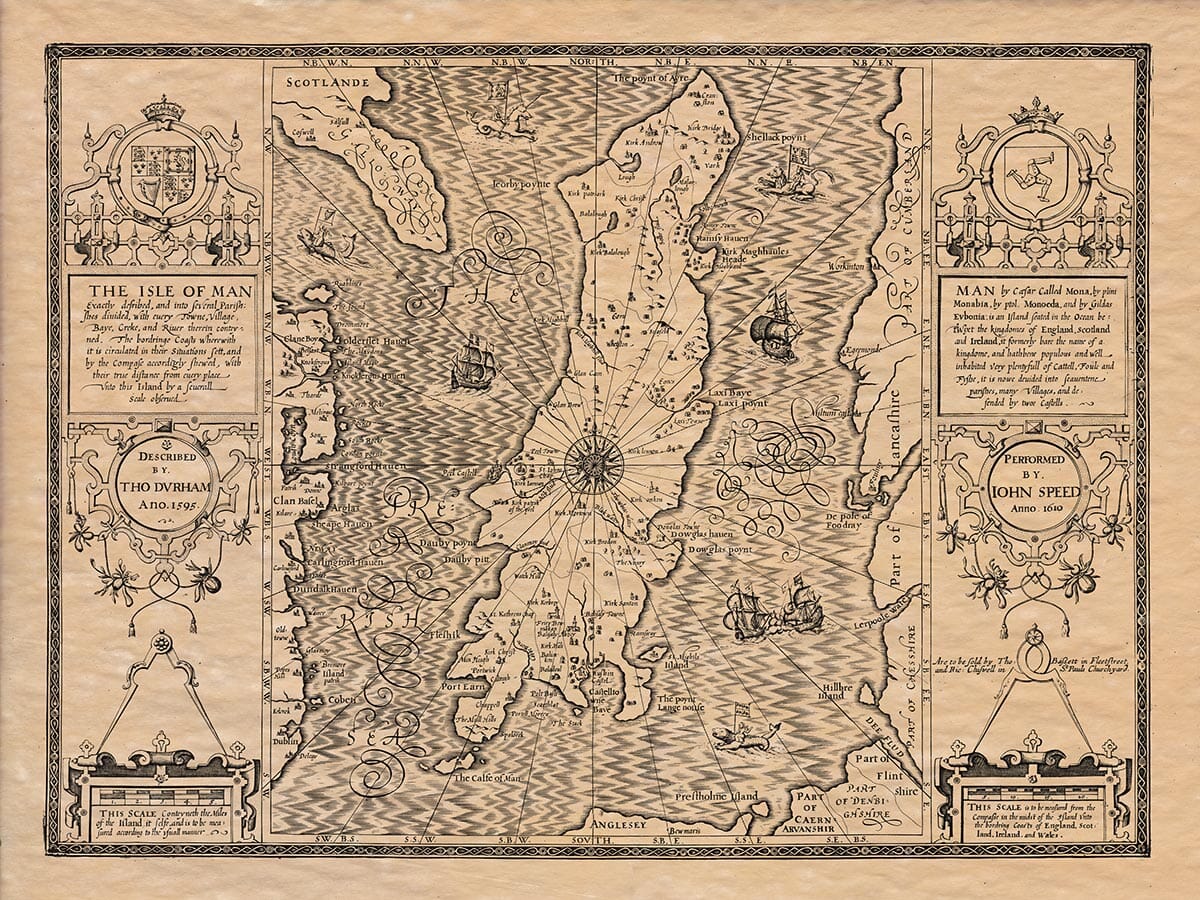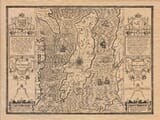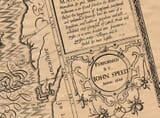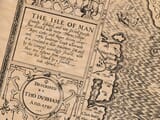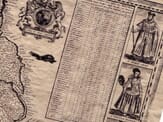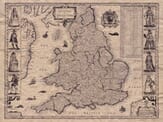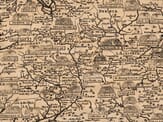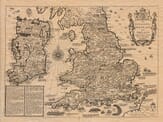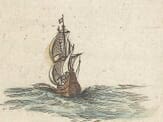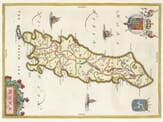Description
John Speed added a short essay which was published on the rear (the verso) of his old map of the Isle of Map which we have translated into modern English . . .
The Isle of Man was called Moneda by Ptolemy, Monabia by Pliny, Menania by Orosius, Menania fecunda by Bede, and Eubonia and Manaw by Gildas. The Britons call it Menow, the inhabitants refer to it as Maninge, and we English call it the Isle of Man. It is located to the north of Scotland, south of the Isle of Anglesey, to the east of part of Lancashire, and to the west, it borders Ireland.
The island is long and narrow: from Cranston to the Mull Hills, where it is longest, it stretches only 29 miles, but from its widest point, from Peel Castle to Douglas Point, it is barely 9 miles wide. The total circumference of the island is about 42 miles.
The air is cold and sharp, since the island lies near the northern parts of the world, with only a wall of water providing some shelter. There are few forests, but sometimes, when digging for a type of moist turf used as fuel, people find ancient trees buried underground.
The soil is fairly fertile, supporting cattle, fish, and grain. However, it is more a testament to the hard work of the people than to the quality of the land itself. Through the efforts of the inhabitants, the island provides enough for itself and also exports goods to other countries. It has well-fertilized fields that produce plenty of barley and wheat, especially oats. This is why the islanders mostly eat oat bread. The island also grows abundant hemp and flax, and it has large flocks of sheep and other livestock. However, these animals are smaller than those found in England, and they resemble the cattle of neighboring Ireland.
One of the island’s advantages is its lack of excessive legal disputes. The people there are free from the usual burdens of lawsuits, long delays in courts, and unnecessary lawyer fees. No judge or court clerk charges any money for drawing up documents or making legal processes. Disputes are resolved by certain judges chosen by the people themselves, called Deemsters. When someone makes a complaint to the magistrate, he takes a stone, marks it with a symbol, and gives it to the plaintiff. With this stone, the plaintiff calls their adversary to court and can bring forward witnesses. If the case is more serious and cannot be easily resolved, it is referred to twelve men known as The Keys of the Island.
Another advantage of the Isle of Man is its strong defense. The island is protected from neighboring enemies by soldiers who are always ready. On the southern side of the island is Bala-Curi (the Bishop’s residence), and a fort called Pyle, where there is a continuous garrison of soldiers. The island is so well governed that everyone can live in peace and security. No one fears losing their possessions, and there is little inclination toward theft or lawlessness.
Most of the island’s inhabitants are religious and have great respect for their pastors. They attend church services regularly and are united in their faith. The wealthier people, who own the best land, follow the example of people in Lancashire, being honest and maintaining good households. The common people, in terms of language and manners, are closest to the Irish, though they also show some traits of the Norwegians.
A notable feature of the island is its landscape, as it is filled with hills, the tallest of which is called Sceaful. On a clear day, one can see three kingdoms from the top: Scotland, England, and Ireland. The island forbids begging from door to door, as it disapproves of the disorderly customs of neighboring nations, both civil and ecclesiastical. Lastly, it is worth remembering that the women of the island, when leaving their homes, wear the winding sheet they intend to be buried in, as a reminder of their mortality. Those condemned to death are sewn into a sack and thrown into the sea from a rock.
The island is divided into two parts: the north and the south. One part resembles the Scottish way of speaking, while the other is more like the Irish. The island is protected by two castles and has seventeen parishes, five market towns, and many villages.

